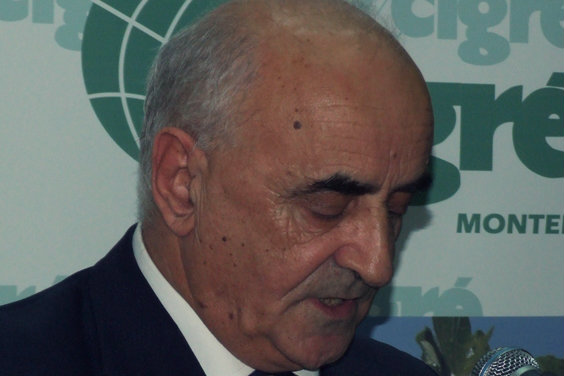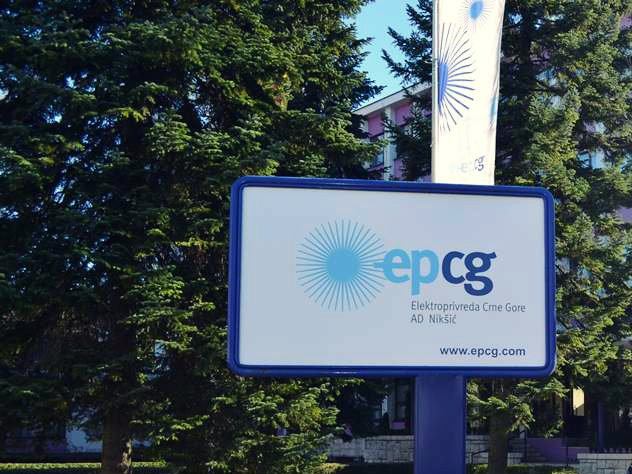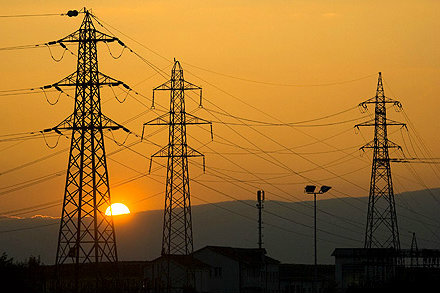Morača deeper than Piva
 I do not know for whom the current authorities are preserving the project of Komarnica and Kruševo – weather for themselves or their friends, because that project is cheaper, with better effects in electricity production, effects from sale are manifold bigger than in Morača, it is seismically safer and economically more cost effective, says professor Branko Radulović. «Power Plants on the Morača river are a more attractive project in relation to the PP on the Komarnica river», the Ministry of Economy responds
I do not know for whom the current authorities are preserving the project of Komarnica and Kruševo – weather for themselves or their friends, because that project is cheaper, with better effects in electricity production, effects from sale are manifold bigger than in Morača, it is seismically safer and economically more cost effective, says professor Branko Radulović. «Power Plants on the Morača river are a more attractive project in relation to the PP on the Komarnica river», the Ministry of Economy responds
At the moment Montenegro is consuming around 4.500 gigawatts of electric energy per year, and the official forecast says that by 2025 the consumption will grow to 5.5 thousand gigawatts, even to seven thousand. As the construction of one power plant takes on average four years, Montenegrin public rached, as it did rarely before, a consensus that it is high time to begin construction of new energy sources. The story becomes complicated when the questions – where and how – are asked?
It is since the 70s of the last century that Montenegrin Elektroprivreda (Power Supply Company) has had plans for the construction of the second block of the thermal power plant in Pljevlja, as well as the system of hydropower plants that would use the accumulation and the catchment areas of the Piva Lake, Morača and Tara rivers and the Bilećko Lake. Those plans, however, originate from a different economic, geopolitical and political period, when Montenegro was an integral part of SFR Yugoslavia. Each of those plans requires, to a certain degree, an agreement to be made with neighbours.
 The plans of the earlier state concerning energy, which, with slight innovations, the present political leadership is using as well, envisaged the construction of the PP Komarnica, which would complete the system with the existing PP Piva, produce peak current and be irreversible, which means it would use the same water twice. This idea has now been put on the back burner, and the construction of the PP system on Morača becomes a priority. The Government announces that the tender for the selection of the concessionary for the implementation of this project will be published in November, even though this summer EPCG issued announcements which can lead to the conclusion that the partner – is already known.
The plans of the earlier state concerning energy, which, with slight innovations, the present political leadership is using as well, envisaged the construction of the PP Komarnica, which would complete the system with the existing PP Piva, produce peak current and be irreversible, which means it would use the same water twice. This idea has now been put on the back burner, and the construction of the PP system on Morača becomes a priority. The Government announces that the tender for the selection of the concessionary for the implementation of this project will be published in November, even though this summer EPCG issued announcements which can lead to the conclusion that the partner – is already known.
“After recapitalization is completed and the new management appointed, Montenegrin Elektroprivreda and the future strategic partner should make a consortium that would build hydropower plants (HPP) on the Morača river», stated the President of the Board of Directors of that company, Srđan Kovačević. The announcement arrived in mid August at the time of final negotiations of the Tender Commission members with the Italian A2A, while the experts tried to figure out how these negotiations are being conducted without a solution for two great unknown facts – the future of the biggest consumer of electricity the Aluminium Plant (and its further cooperation with Elektroprivreda) and the relations between EPCG – Regulatory Agency for Energy on the issue of future electricity price and allowed profit rate that the Agency will grant to Elektroprivreda.
«It is clear that EPCG cannot build the PP on the Morača river by itself, even through recaptialization, because this is a project that, apart from money, requires enormous knowledge and a bigger company», specified Kovačević stressing the trump card of EPCG: «The fact that all the documents are property of EPCG secures to the company a position at the end of the power plants construction. It is absolutely normal that EPCG should manage those resources and that they become a part of a unified system”. Therefore, if these announcements become true, it only remains for the Government and A2A to agree on the percentage of ownership in the consortium that will build and manage the HPP system on Morača. And this arrangement provides an opportunity to “correct” the mentioned illogicalities and unknown facts from the arrangement reached this summer.
 – It is simply inconceivable that during 28 years not a single source of electric energy has been built in Montenegro, says professor Milutin Ostojić for Under the Magnifying Glass, reminding that PP Piva was constructed in 1976 and TPP Pljevlja in 1982. «Debates on a new hydro source have been conducted for more than 30 years, round tables and conferences were organized, strategies for energy development adopted, transfer of waters planned as well as flooding of settlements, so today one has an impression that something was being done, and we were actually just turning around in a vicious circle not knowing how to get out since we could not agree with the neighbours on the transfer of a part of water from Tara into Morača, we could not agree with ourselves on the protection of the Tara river, with the Republic of Srpska on the use of our part of waters in the Bilećko Lake, on the fourth generating unit in the PP Bajna Bašta, and we did not have enugh resoluteness or money, or neither of it, to construct a hydropower plant that is not controversial. It turns out that all our priorities – the Tara – Morača system, Tara, Buk Bijela and to a considerable extent Morača too were disputable. Today we must not have a disputable candidate as the first on the list of priorities, so that we lose precious time again».
– It is simply inconceivable that during 28 years not a single source of electric energy has been built in Montenegro, says professor Milutin Ostojić for Under the Magnifying Glass, reminding that PP Piva was constructed in 1976 and TPP Pljevlja in 1982. «Debates on a new hydro source have been conducted for more than 30 years, round tables and conferences were organized, strategies for energy development adopted, transfer of waters planned as well as flooding of settlements, so today one has an impression that something was being done, and we were actually just turning around in a vicious circle not knowing how to get out since we could not agree with the neighbours on the transfer of a part of water from Tara into Morača, we could not agree with ourselves on the protection of the Tara river, with the Republic of Srpska on the use of our part of waters in the Bilećko Lake, on the fourth generating unit in the PP Bajna Bašta, and we did not have enugh resoluteness or money, or neither of it, to construct a hydropower plant that is not controversial. It turns out that all our priorities – the Tara – Morača system, Tara, Buk Bijela and to a considerable extent Morača too were disputable. Today we must not have a disputable candidate as the first on the list of priorities, so that we lose precious time again».
The authorities do not care about objections, but regard the project of PP construction on the Morača river as an accomplished fact. However, even though the time for publishing of a new tender has approached, the public still does not see clearly what is actually going to be built on the River Morača. Confusion is created by the statements of officials that four PPs will be built: Andrijevo, Raslovići, Milunovići and Zlatica, but transfer of a part of waters from the Tara River into Morača is not mentioned, which, according to the interpretations of experts, is a prerequisite for the construction of PP Andrijevo.
Do we need to remind of the decision of the Parliament of Montenegro by which Tara was freed from the burden of hydropower plant construction, but also of the fact that any kind of intervention on its course would imply previous agreement with Serbia and B&H, i.e. the Republic of Srpska. It is hard to believe that the energy planners simply fail to see these facts. Or they know something the public here has not yet been informed of?
Even though there is no dilemma among experts that PP Komarnica is the least disputable, the cheapest and in terms of energy the most efficient for Montenegro, its construction is mentioned in the official circles only as an idea to be realized by someone in the future.
 Calculations of EPCG and the consulting house Statkraft from 2006 made a pricelist for construction of potential energy objects and assessed the energy obtained through them. According to those data, the construction of HPP Komarnica would cost between 134 and 157 million Euros, based on the calculations from the Master Plan and Nerconsult, it would have 169 megawatt installed power, and would produce 202 gigawatts of electricity per year. The price of energy from that source would be from 6.9 to 7.9 cents. The remark that the power from Komarnica would be peak should be added to the calculation, which means that its kilowatt could be sold at a higher price.
Calculations of EPCG and the consulting house Statkraft from 2006 made a pricelist for construction of potential energy objects and assessed the energy obtained through them. According to those data, the construction of HPP Komarnica would cost between 134 and 157 million Euros, based on the calculations from the Master Plan and Nerconsult, it would have 169 megawatt installed power, and would produce 202 gigawatts of electricity per year. The price of energy from that source would be from 6.9 to 7.9 cents. The remark that the power from Komarnica would be peak should be added to the calculation, which means that its kilowatt could be sold at a higher price.
The same studies show that, without transfer of water from Tara into Morača, the cascade PPs on Morača would have installed power of 238 megawatts, the annual production of 680 gigawatts, the construction would cost between 430 and 498 million Euros, and the production cost of a kilowatt would be from 6.6 to 7.6 cents.
Professor Ostojić warns that these data should be taken with reserve since they are based on the hydrology range from 1926 to 1965. It is well known, says our interlocutor, that based on these data it was envisaged that PP Piva should produce on average 20 percent more energy (around 970 GWh) than it really produces after construction. «From the data given in the Energy Strategy it can be concluded that the document was produced according to old data. If this is true, then the entire existing documents for the construction of new hydropwer plants should be observed only at the level of pre-feasibility and feasibility studies. If there is newer hydrology range, than the annual production and construction costs should be calculated for all the power plants – candidates for construction,», recommends Ostojić.
The Government announces that the tender for the selection of a concessionaire for implementation of the project of power plants construction on Morača will be published in November, even though this summer EPCG issued announcements which can lead to the conclusion that the partner – is already known.
He too states that the studies produced from 1972 to 1976 showed that power plants on the Morača river, without transfer of waters from Tara, are not quite efficient in economic terms. «Is this confirmed by the failure of the tender for the construction of PP on the River Morača several yaers ago? Actually, we did not hear the real reason why the tender failed», thinks Ostojić pointing out that, on the other side, the catchment area of Piva is characterized by the fact that its entire disposable potential of around 1360 gigawatts per year, is technically usable and economically efficient.
«Around 750 gigawatts are being used at the moment, and the rest can be used by building the PP Komarnica, PP Kruševo and a number of small power plants in the upper part of the catchment area of the Piva River. The permanement protection of the entire Tara River basin, as a world heritage reserve, makes topical the construction of the PP Kruševo, of 2×65 megawatts capacity and around 330 gigawatts annual production, which would be constructed on the unused, unsettled, and, very importantly, devastated course of the Piva River, downstream from the PP Piva, in the vicinity of Šćepan Polje”, thinks Ostojić.
PP Komarnica belongs to the category of economically cost effective potential and enters all the priority lists of objects for realization in Montenegro, and the entire effects of its construction, together with the PP Kruševo and a number of mini power plants would be 560 gigwatts per year, installed capacity 288 megawatts, and the total cost of everything would be 250 million Euros. For the sake of comparison – to total capacity of PP Andrijevo and Zlatica, whose construction is planned by the year 2013, would be 164 megawatts, the annual production 470 gigawatts, and the price of construction 280 million Euros.
Answering our question: why does the catchment area of Morača have priority in relation to Piva, the Ministry of Economy points out that the Energy Development Strategy envisaged the construction on both water courses: four cascade hydropower plants on the River Morača of 238 megawatts of installed power and one on the Komarnica river, of 169 megawatts installed power. They explain:
 “The time advantage was given to the project on Morača due to its greater attractiveness and more extensive investigations that have been done and produced technical documents. Namely, comprehensive geotechnical and hydrological investigations have been done for the HPP project on the Morača river during the previous fifty years. The latest project documents at the level of Concept Design, date from 1987-88 and represent very detailed project documents, at a higher level than the feasibility studies and almost at the level for publishing of tenders for individual contracts for objects construction. The project became additionally topical in the years 1997-98. For the project of hydropower plant construction on Komarnica, the produced technical documents are at a lower level. HPPs on Morača are a more attractive project in relation to the HPP on Komarnica from the energy aspect too, due to bigger production and cheaper electrical energy produced», state from the Ministry.
“The time advantage was given to the project on Morača due to its greater attractiveness and more extensive investigations that have been done and produced technical documents. Namely, comprehensive geotechnical and hydrological investigations have been done for the HPP project on the Morača river during the previous fifty years. The latest project documents at the level of Concept Design, date from 1987-88 and represent very detailed project documents, at a higher level than the feasibility studies and almost at the level for publishing of tenders for individual contracts for objects construction. The project became additionally topical in the years 1997-98. For the project of hydropower plant construction on Komarnica, the produced technical documents are at a lower level. HPPs on Morača are a more attractive project in relation to the HPP on Komarnica from the energy aspect too, due to bigger production and cheaper electrical energy produced», state from the Ministry.
Deputy of the Movement for Changes in Montenegrin Parliament prof. dr Branko Radulović claims that the Ministry changed theses and that it is spreading misinformation.
– Technical documents and geological works for Kruševo and largely for Komarnica have been completed, Morača not only lacks documents, but the views on the effects of construction due to the stability of Morača canyon are contradictory, because the seismic findings have not been confirmed. If effects on population and ecological standards are compared, as well as seismic safety, then the project of construction of power plants on Morača occupies the last place on the investments priority list – said Radulović stressing that the entire project would bring more expenses than benefits, if waters from Drina and Tara are not transferred.
– I do not know for whom the current authorities are preserving the project of Komarnica and Kruševo – whether for themselves or for their friends, because that project is cheaper, gives bigger effects in the production of electricity, the effects of sale are manifold increased in relation to Morača, it is seismically safer and economically more cost effective. One should not forget the effecs from tourism, which would set on its legs the economy of Šavnik and Plužine and prevent migration to Podgorica – thinks Radulović and concludes that the entire effects of Komarnica and Kruševo construction are up to seven times bigger than of the undertaking on Morači.
– I do not know what stands behind such a plan of the current authorities, but I know it is foolish– states Radulović.



